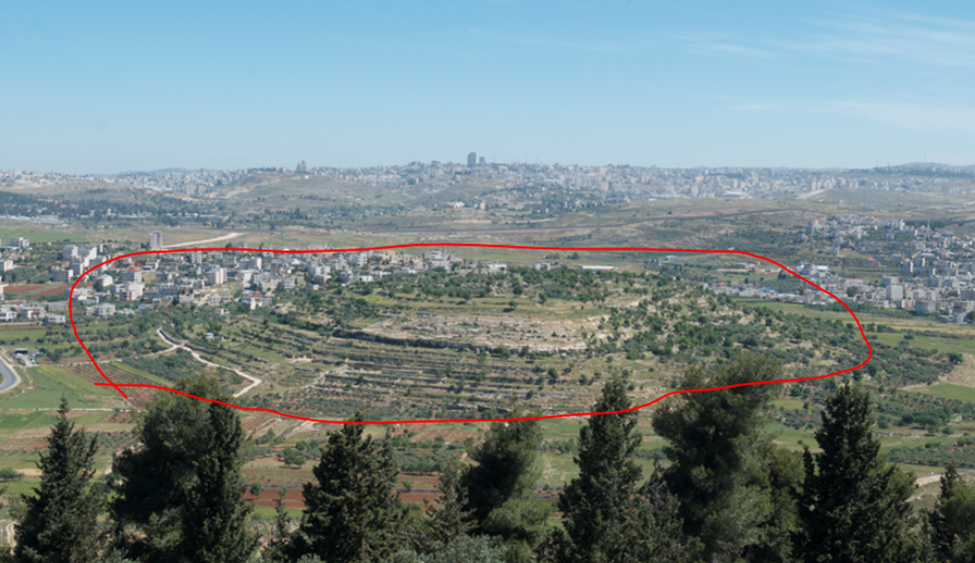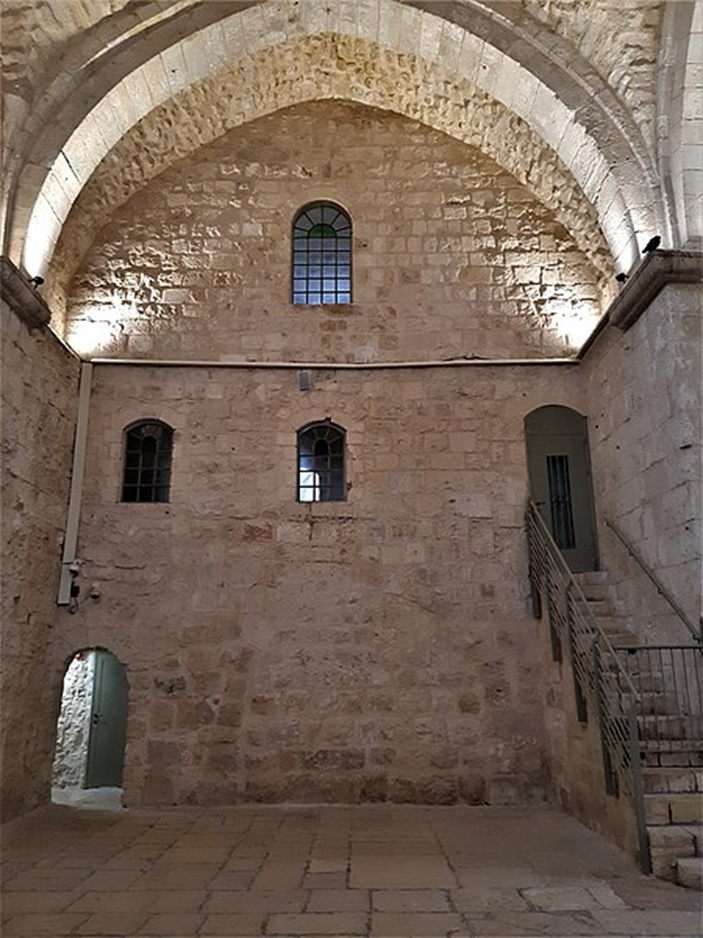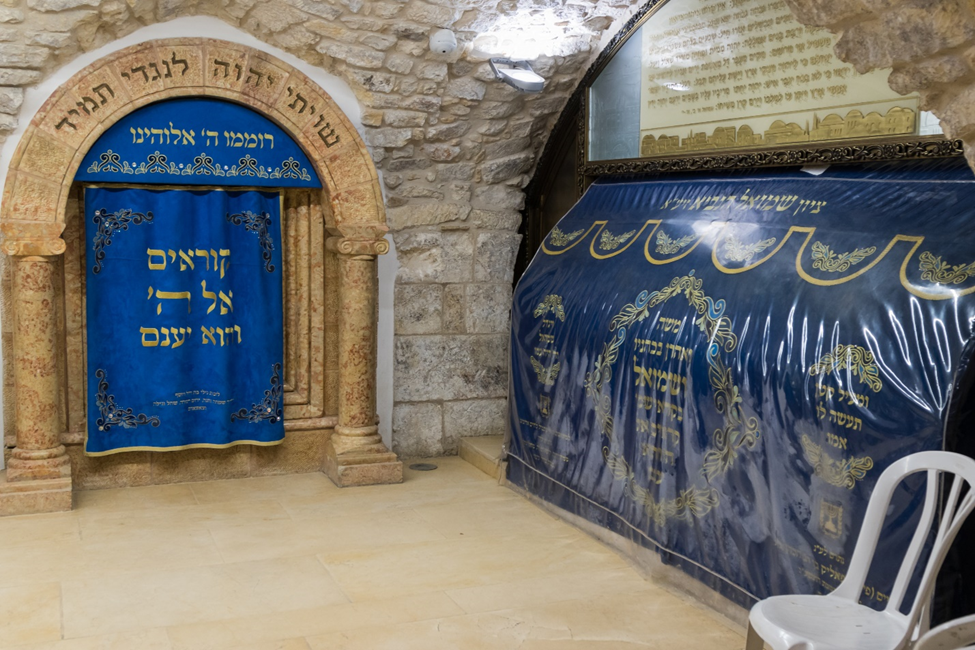“Samuel said, “Gather all Israel to Mizpah, and I shall pray to the Lord on your behalf. And they assembled at Mizpah…drew water, and poured (it out) before the Lord, and they fasted on that day, and said there, “We have sinned to the Lord.” And Samuel judged the children of Israel in Mizpah.” (1 Samuel 7:5-6)”

Photo Credit: Shutterstock
Today, we are visiting a special site which is (surprisingly) seldom visited by non-Israelis. This site offers the perfect combination of ancient ruins, breathtaking views (arguably the best in the country), conveniently close to Jerusalem, and a Biblical history with few equals! The 900-year-old, still perfectly functioning building has a complicated history (originally built as a Crusader church, it currently houses both a mosque and synagogue).

Photo Credit: Shutterstock
Climbing to the top of the roof of the former crusader church, there are several locations to view where many exciting Biblical stories took place, including Gibeon, a powerful Canaanite city-state (and centuries later home of the Tabernacle). After Joshua defeated the city states of Jericho and Ai, Gibeon made an alliance with the Israelites. Five Canaanite kings attacked Gibeon, sending a message that making peace with the Children of Israel was not in their interest. When they attacked, Joshua felt bound by his oath and came to their rescue. As the armies of the five kings saw him coming, G-d put panic into their hearts and they were smitten, with the survivors fleeing by way of the “Ascent of Beth-Horon” which is also easily seen from the roof (for more on that site, click here). As they began descending from Beth-Horon, G-d sent a hailstorm that eliminated most of the remaining troops (Joshua 10). According to Jewish sources, these very hailstones were left over from the plague of hail in Egypt. When Moses asked G-d to stop the plague (see Exodus 9:33) the remaining hail was saved. Several other Biblical sites can be spotted here.

Photo Credit: Natritmeyer – Creative Commons Attribution-Share Alike 4.0 International
Remains from several eras have been found here, including many strong fortifications. This makes perfect sense, considering that it is situated right on the most historically important road connecting Jerusalem to the coast (today’s highway 443) and that from here, the view of approaching enemies can be seen from great distances on all sides.

Photo Credit: Atefrat –CC BY-SA 3.0
Several archeologists have identified this site as being biblical Mizpah (although others have said it was the High Place of Gibeon (near the town of Gibeon itself) where King Solomon offered sacrifices to G-d and was granted wisdom in 1 Kings 3:4). Others identify it as Ramah. The city was in the tribal territory of Benjamin, and it was here that the tribes of Israel gathered to decide the punishment after the incident of the concubine that took place in Gibeah of Benjamin (see Judges 19-21, for more on that fascinating site, click here). After the Ark of the Covenant returned to Israel (after having been stolen by the Philistines), the Prophet Samuel gathered the nation onto this hill and led the people in mass repentance. When the Philistines heard that the Jewish people were gathered here, they proceeded to attack. Samuel then made a sacrifice and cried out to G-d. The Almighty responded with a loud noise which threw their enemies into a panic, allowing Israel to easily defeat them (see 1 Samuel 7).
Perhaps the most consequential event to take place here was the founding of the Judean Monarchy. Here, lots were drawn, and Saul was publicly selected to be the first king of Israel (he had already been anointed king by Samuel, but that was done in private). Later, when Jerusalem and the Temple were destroyed by the Babylonians in 422 BCE (some say 586 BCE), the righteous Gedaliah was appointed ruler over the people of Israel who had not yet been exiled. It was here where Gedaliah ruled and was assassinated, causing the remaining Jews in Israel to flee to Egypt.

When the Jewish people returned to Israel under Nehemiah, Mizpah was resettled (see Nehemiah 3:7). During the Hasmonean revolt against the Hellenists, Judah the Maccabee (circa 165 BCE) gathered the Jewish troops to Mizpah and launched a successful attack against the Syrian Greek forces. Subsequently a major Jewish town was built there, whose remains are still very visible and impressive.

Photo Credit: Shutterstock
The town was later abandoned and continued to be empty for most of the Roman period (although a Byzantine Monastery would later be built here). The most impressive remains one can see today are from the Crusader period. In 1099, the crusaders marched up today’s highway 443. Upon reaching the hill, they were so excited to see Jerusalem that they named it Mont de Joie (Mount of Joy). The troops waited here for the siege equipment needed to breach Jerusalem’s walls. One month later, Jerusalem was theirs (after which the Crusaders cruelly massacred 10,000s of Jews without mercy, forbidding Jews from living in their eternal capital for nearly a century).

In 1144, the crusaders built a massive fortress at this site.

Photo Credit: Nosson Shulman
The centerpiece of this town was the Church they had built. Still standing in its entirety as a functioning building, it is one of the best-preserved Crusader buildings in the world.

Photo Credit: Heritage Conservation Jerusalem Pikiwiki Israel – Creative Commons Attribution 2.5 Generic
The crusaders built this church on top of what they believed to be the tomb of the Prophet Samuel, who often frequented this location. Although the Bible states that Samuel was buried in Ramah and not Mizpah (indeed, some archeologists claim that this site is actually Ramah, with Mizpah not being here but close by), there are reliable medieval sources that claim the crusaders removed the bones from near a synagogue in Ramle. They thought (correctly or incorrectly) that the bones belonged to the prophet and reinterned them here (they thought the name “Ramle” had its origins in the name “Ramah”, where the Bible says the Prophet was buried). The Crusaders were expelled by the Muslims in 1187 and this building was confiscated and turned into a mosque (which is still active today in part of the building).

Photo Credit: Shutterstock
During World War 1, a major battle took place between the British and Turks. The British were victorious and soon expelled Turkey from the Holy Land, but not before this building was damaged (and subsequently restored in 1926). In the 1948 War of Independence, Jordanians bombarded Jerusalem from here. An Israeli force tried to capture the hill during the war, but were repelled, resulting in the death of 40 Jewish fighters. During the Six Day War in 1967 the Jordanians once again shelled Israeli neighborhoods, but this time Israeli forces successfully captured the hill and while they allowed the mosque to remain, they removed the decree that had banned non-Muslims from entering the building (Jews and Christians had been banned from this holy site for centuries). Today, the basement is home to an active synagogue and thriving Kollel (Academy of Torah Studies) and the building is open to all who wish to visit, regardless of their religion.

Photo Credit Shutterstock
Please visit the author’s Israel tour guiding site: https://guidedtoursofisrael.com
(All images used are either free usage or properly licensed by the author)






![Why You Shouldn’t Be Afraid of G-d – Soul Talk [audio]](https://c622d1ec.delivery.rocketcdn.me/wp-content/uploads/2025/03/light-4681014_640-218x150.jpg)
![Modesty & Matzah – Pull Up a Chair [audio]](https://c622d1ec.delivery.rocketcdn.me/wp-content/uploads/2025/03/matzah-1566456_640-218x150.jpg)
















